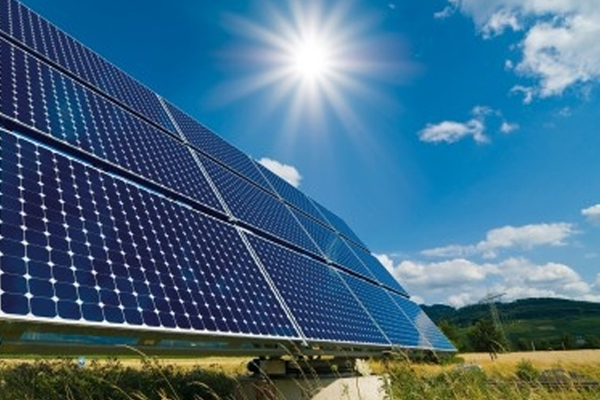VIDEO & CENTER

The Gila River Indian community says it has broken ground to begin building a solar array. The array will cover an irrigation canal south of Phoenix, Arizona.
The Gila River Indian Community says it has signed an agreement with the U.S. Army Corps of Engineers to install solar panels on irrigation canals on land south of Phoenix, Arizona.
The first phase of the project will cover approximately 1,000 feet (304.8 meters) of irrigation canals to reduce water loss from evaporation. The project is expected to prove the feasibility of solar roof irrigation canals and has the potential to add additional construction lengths to community solar roof irrigation canals in subsequent phases. The Army Corps of Engineers expects to complete the first phase of the project in 2025.
The first phase of the project, which will cost $6.744 million to invest, will add 1 MW of solar power while reducing water evaporation in irrigation canals. The project received a $517,000 grant from the U.S. Bureau of Reclamation, and funding for the second phase of the project is also expected to come from the Bureau of Reclamation. The agency is implementing a funding program established by Congress to pilot solar-powered irrigation canals.
"This first pilot project will break new ground in further leveraging the community's role as water stewards and in keeping with the community's tradition of innovative irrigation systems throughout the land," said Gila River Indian Community Governor Stephen Roe Lewis.
Earlier this year, a coalition of more than 125 groups urged the U.S. Department of the Interior and Bureau of Reclamation to evaluate the efficiency of solar irrigation canals. The request, signed by several major climate and environmental groups, highlights the opportunity to install solar power on 8,000 miles of open irrigation canals. The group claims that these areas can be expected to install 25 GW of renewable energy, enough to power nearly 20 million homes.
"The Bureau of Reclamation and the states through which the Colorado River flows are already considering unprecedented water conservation measures to protect the water supply of the 40 million people who live along the river," the letter said.
The Gila River community's solar-powered irrigation canal project was one of the first to break ground in the United States. The project is expected to set an example for other regions facing the dual challenges of water conservation and clean energy goals.
California's Central Valley Project, for example, is a massive irrigation canal system that uses about 1 billion kilowatt-hours of electricity a year just to pump water. The addition of solar generators to the system, replacing the current diesel generators, will make the entire water transport system more efficient.
"Given the Bureau of Reclamation's long history in hydropower, solar power generation on its irrigation canals would be a pure added benefit and could even help address power generation shortages at a time when hydropower facilities are unable to operate due to low water levels," the letter added. The practice of installing solar installations on irrigation canals has caught on around the world. Projects are underway in California, India, Spain and France, many with large utility-scale capacity.














